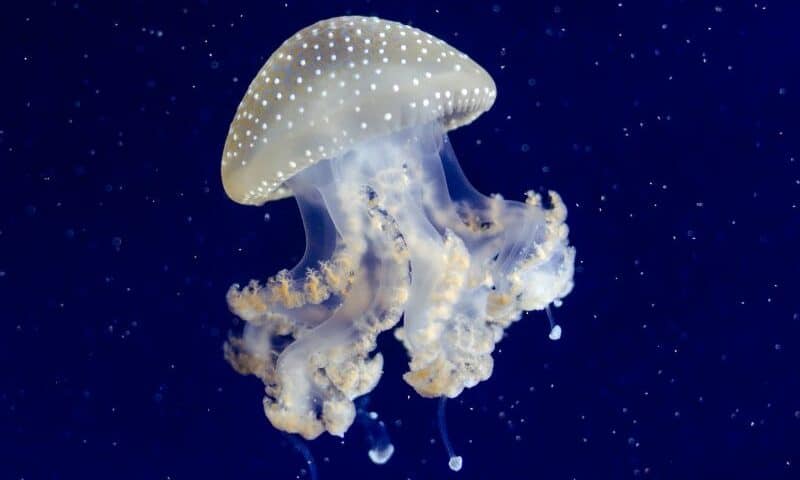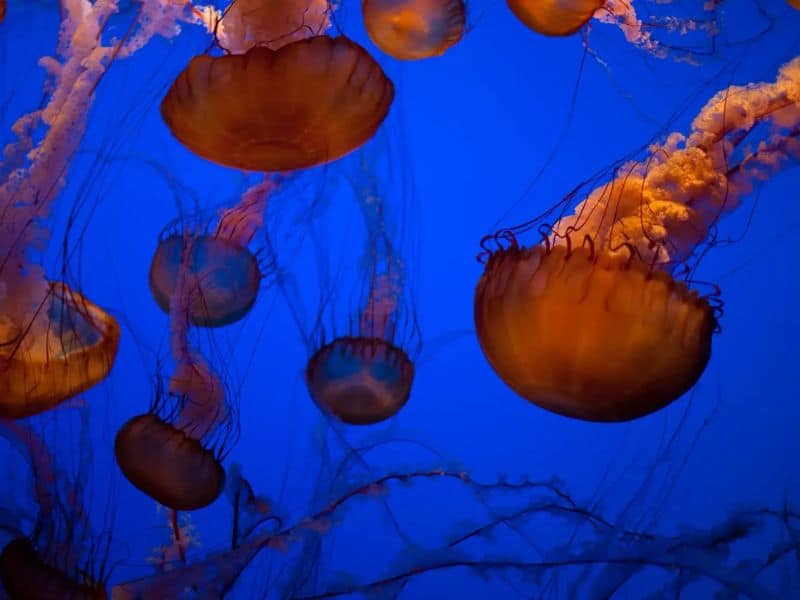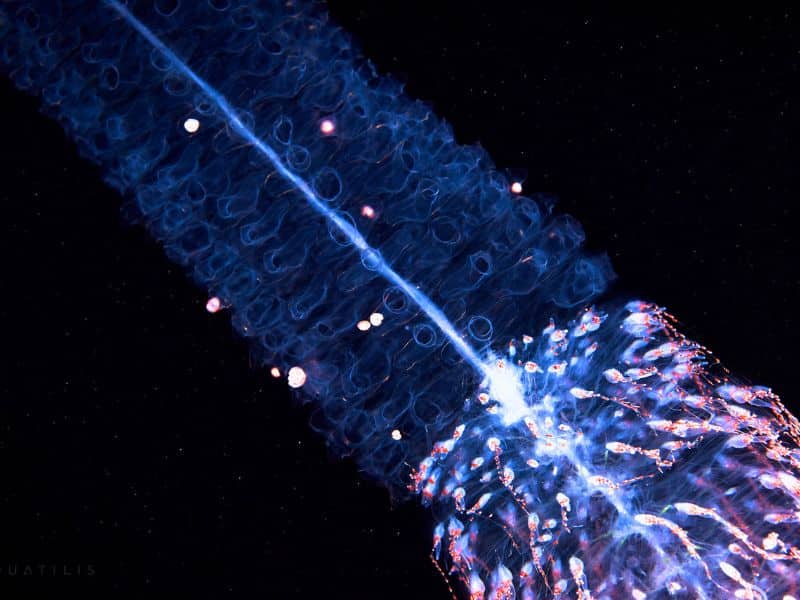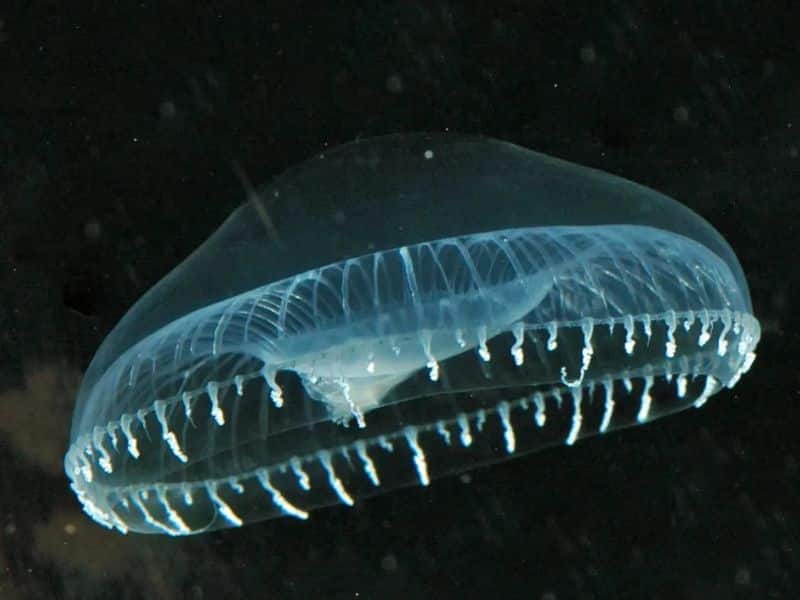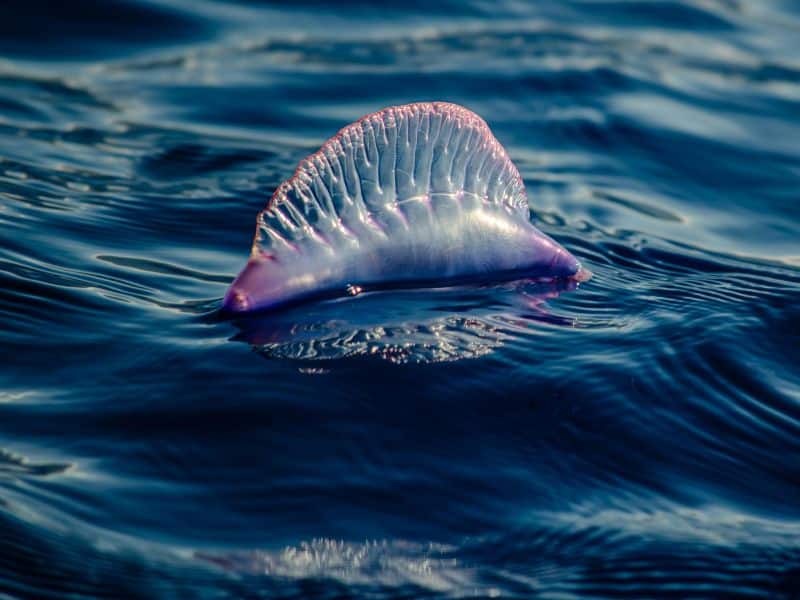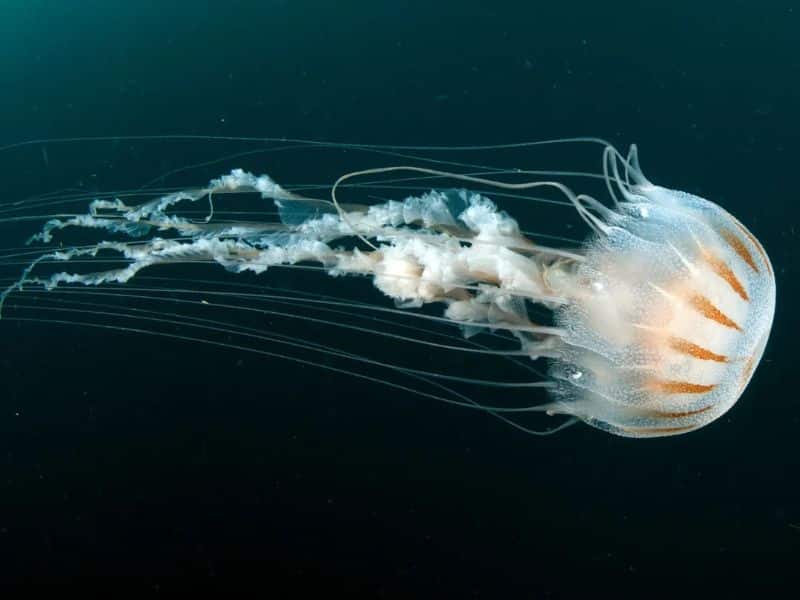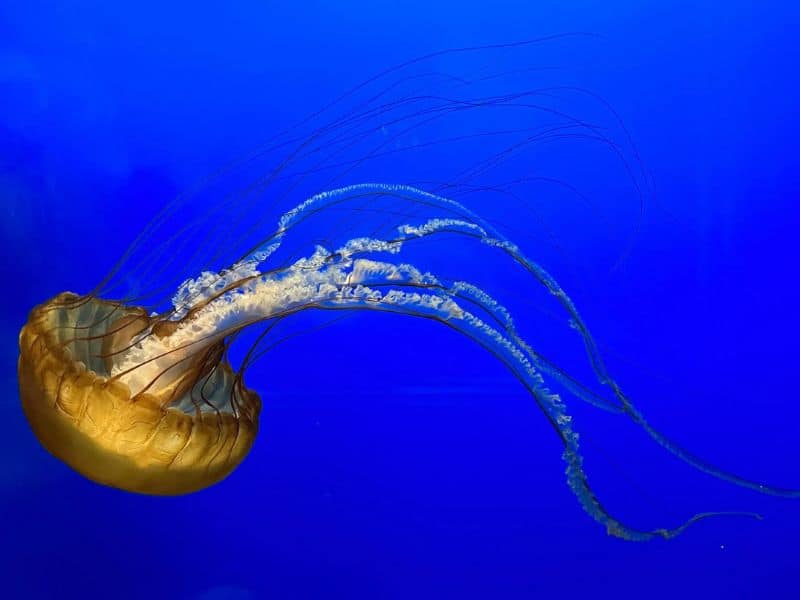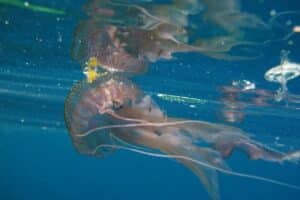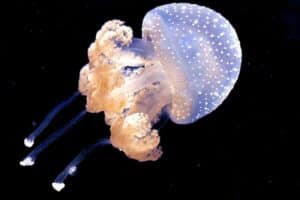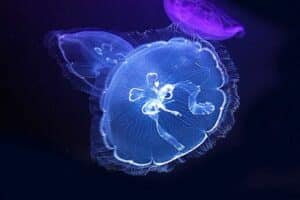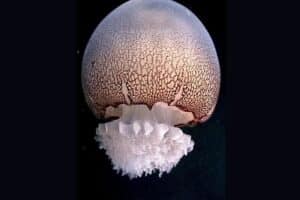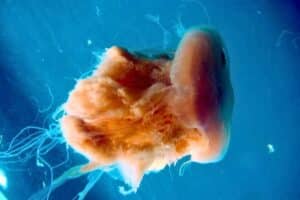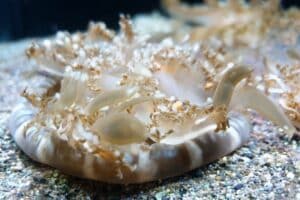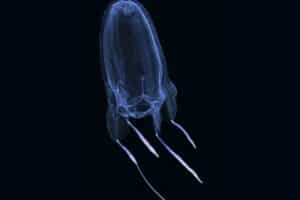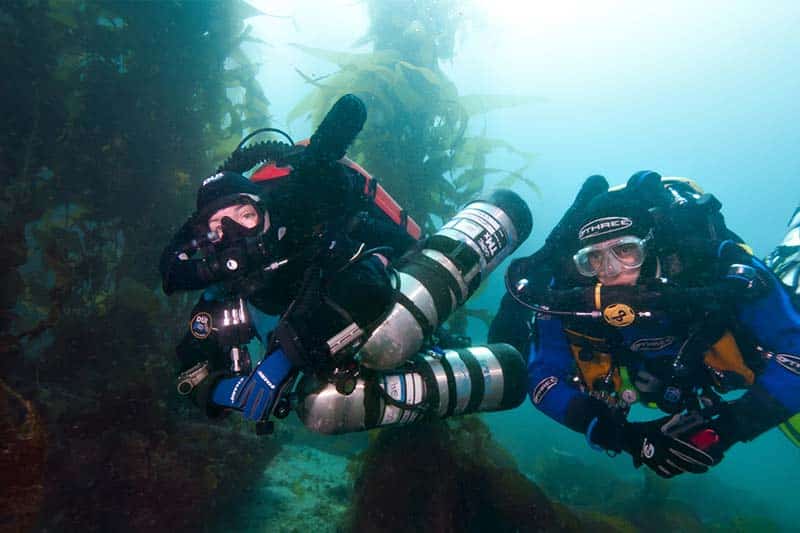3. True Jellyfish and Box Jellyfish
3.1. True Jellyfish (Class Scyphozoa)
Jellyfish are fascinating and enigmatic creatures of the marine world. When discussing jellyfish, it’s essential to highlight their diversity and uniqueness. True jellyfish belong to the Class Scyphozoa, and their anatomy is as interesting as it is varied.
Structure and Anatomy of Jellyfish
Jellyfish have a unique body structure, with a prominent bell that varies in shape. If compared to dishes, they can range from “flat plates” to large bowls. In jellyfish anatomy, their tentacles play a crucial role. Hanging from the edge of the bell, these tentacles are armed with stinging nematocysts, used for both capturing prey and defense. Depending on the species, the number and length of these tentacles can vary greatly.
The jellyfish’s mouth is located at the end of a feeding tube extending from the center of the bell’s underside. In some species, this tube is surrounded by four oral arms (named so because they are near the mouth) that dangle.
Another interesting fact about jellyfish is that, despite their biological complexity, they have no brain, heart, or bones. Instead, they possess a simple nervous system that detects light, vibrations, and chemicals in the water. Jellyfish are made up of 95% water.
Jellyfish lack a bony skeleton like other animals; instead, they have a hydrostatic skeleton composed of fluids and circular muscles in their bells. This system allows them to propel themselves by contracting their muscles and expelling water in the opposite direction of their movement. This method of propulsion is efficient in calm seas, but in stronger currents, jellyfish simply drift with the flow.
This simplicity makes them an evolutionary mystery and a fascinating subject for marine biologists.
3.2. Box Jellyfish (Class Scyphozoa, Subclass Cubomedusae)
Box jellyfish, scientifically classified under the class Scyphozoa and subclass Cubomedusae, are among the most fascinating and dangerous jellyfish species.
Structure and Anatomy of Box Jellyfish
Box jellyfish have a unique anatomy, starting with their distinctive cubic bell. This box-like shape, with its four square sides, sets them apart from other jellyfish. Their appearance is not only distinctive in shape but also in rigidity, as their bell is more solid compared to common jellyfish.
One of the most interesting facts about box jellyfish is their advanced visual capability. These jellyfish have sophisticated vision, which is rare among jellyfish. With 24 eyes spread across the four sides of their bell, they have a 360-degree field of view, allowing them to detect prey and potential threats with great efficiency. They are also extremely fast, capable of moving up to six meters per minute.
Tentacles of Box Jellyfish
Each of the four corners of the box jellyfish’s bell has one or more tentacles filled with stinging nematocysts. Unlike other jellyfish, these tentacles do not hang from the edge of the bell but are strategically placed at the corners, giving them a unique and effective appearance for hunting.
Regarding their life cycle, box jellyfish undergo a polyp stage and a medusa stage, similar to other species, but their cubic shape is unique to this type of jellyfish.
The sting of box jellyfish is known to be extremely painful and, in some cases, fatal. For this reason, it’s crucial to exercise caution if you are in waters where these jellyfish are found.




